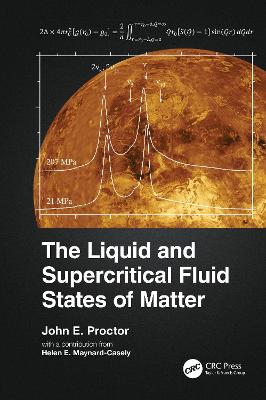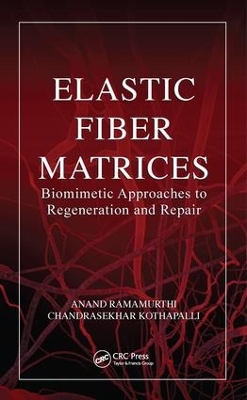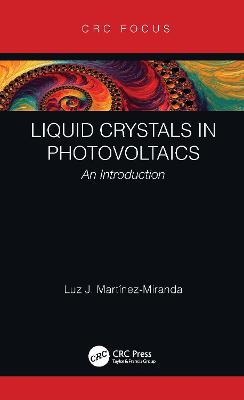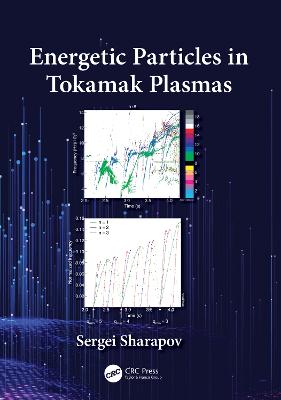Liquid and Supercritical Fluid States of Matter
 -10%
portes grátis
-10%
portes grátis
Liquid and Supercritical Fluid States of Matter
Proctor, John E.
Taylor & Francis Ltd
09/2020
276
Dura
Inglês
9781138589735
15 a 20 dias
562
Descrição não disponível.
Contents
Preface...................................................................................................xi
Useful Equations and Definitions.......................................................xv
Definitions.......................................................................................... xxi
1 Some Remarks on the Gas State
1.1 Equation of State (EOS) of Real Gases................................................................ 1
1.1.1 The Van der Waals Equation................................................................. 1
1.1.2 The Virial Equation.................................................................................2
1.2 Order in the Gas State............................................................................................3
1.3 Heat Capacity of Gases......................................................................................... 4
1.3.1 How Well Does This Model Work?...................................................... 4
1.4 Vibrational Raman Spectroscopy of Gases........................................................6
1.5 Viscosity of Gases...................................................................................................8
1.6 Why Are Liquids so Difficult?............................................................................ 10
1.6.1 Molecular Dynamics (MD)................................................................. 10
1.6.2 The Fundamental EOS (Section 3.3)....................................................11
1.6.3 Treat the Fluid as Gas-Like.................................................................. 12
1.6.4 Treat the Fluid as Solid-Like................................................................ 12
References.......................................................................................................................... 13
2 The Vapour Pressure Curve and the Liquid State Close to
the Vapour Pressure Curve
2.1 Classical Versus Quantum Liquids.................................................................... 15
2.2 The Transition Across the Vapour Pressure Curve......................................... 17
2.3 The Clausius-Clapeyron Equation.....................................................................19
2.3.1 Validity of the Clausius-Clapeyron Equation.................................. 20
2.4 The Critical Point................................................................................................. 20
2.4.1 Critical Constants and the Van Der Waals
Equation of State....................................................................................25
2.5 Summary............................................................................................................... 29
References......................................................................................................................... 30
3 Equations of State for Fluids
3.1 Cubic EOS Based on the Van der Waals Equation..........................................32
3.1.1 Volume Translation of Cubic EOS..................................................... 34
3.2 The Carnahan-Starling EOS...............................................................................35
3.3 The Fundamental EOS........................................................................................ 36
3.3.1 Ideal Gas Component of the Helmholtz Function.......................... 36
3.3.2 Residual Component of the Helmholtz Function............................39
3.3.3 Fitting the Helmholtz Function to the
Experimental Data................................................................................39
3.4 Conclusions...........................................................................................................41
3.4.1 For What Fluids Is a Fundamental EOS Available?.........................41
3.4.2 How Can We Test the Validity of an EOS?........................................41
3.4.3 What Is the Best Way to Implement Your
Chosen EOS? ............................................................................................................... 44
References......................................................................................................................... 46
4 The Liquid State Close to the Melting Curve (I):
Static Properties
4.1 Density and Bulk Modulus of Fluids Close to the Melting Curve............... 47
4.1.1 Density of Fluid Ar Close to the Melting Curve.............................. 48
4.1.2 Density and Bulk Modulus of Fluid N2 Close to
the Melting Curve................................................................................ 49
4.2 Elastic Neutron and X-ray Diffraction from Liquids Close to the
Melting Curve....................................................................................................... 51
4.2.1 Distinctions Between X-ray and Neutron
Diffraction Experiments......................................................................53
4.2.2 Fourier Transform of Fluid Diffraction Data
to Obtain g (r) ....................................................................................55
4.2.3 Fourier Transform of Modified Fluid Diffraction Data
to Obtain g (r) ..................................................................................................58
4.2.4 Comparison of Diffraction Data to Simulated Fluid
Structures in Reciprocal Space............................................................61
4.2.5 Relation Between g (r), the Partition Function, Internal
Energy, and Pressure.............................................................................63
4.2.6 Relation Between g (r) and Entropy....................................................65
4.2.7 Relation Between g (r) and Co-ordination Number (CN)............. 66
4.3 Short-Range Order and Phase Transitions in Fluids Close to the
Melting Curve...................................................................................................... 67
4.3.1 Co-ordination Number....................................................................... 67
4.3.2 Liquid-Liquid Phase Transitions........................................................ 67
4.4 Equations to Fit the Melting Curve on the P,T Phase Diagram................... 69
4.5 What Happens to the Melting Curve in the High P,T Limit?........................72
4.6 Summary................................................................................................................74
References..........................................................................................................................77
5 The Liquid State Close to the Melting Curve (II):
Dynamic Properties
5.1 Phonon Theory of Liquids...................................................................................79
5.1.1 Frenkel and Maxwell Models..............................................................79
5.1.2 Prediction of Liquid Heat Capacity....................................................82
5.2 Raman Spectroscopy of Liquids and Supercritical Fluids
Close to the Melting Curve................................................................................ 88
5.2.1 Grueneisen Model for Vibrational Raman
Peak Position ........................................................................................................................90
5.2.2 Hard Sphere Fluid Theory of Vibrational
Raman Peak Positions.......................................................................... 91
5.2.3 Peak Position of Rotational Raman Spectra.....................................93
5.2.4 Peak Intensity and Linewidth of Fluid Raman Spectra..................93
5.2.5 Prediction of Fluid Raman Spectra Using MD............................... 94
5.3 Brillouin Spectroscopy of Liquids Close to the Melting Curve................... 96
5.4 Inelastic Neutron and X-ray Scattering from Liquids Close to
the Melting Curve................................................................................................ 98
5.4.1 Distinction Between Neutron and X-ray Scattering....................... 98
5.4.2 The Scattered Intensity........................................................................101
5.4.3 What Can We Learn from Inelastic Neutron and X-ray
Scattering from Liquids?.................................................................... 103
5.5 Summary and Outlook......................................................................................107
References........................................................................................................................108
6 Beyond the Critical Point
6.1 The Widom Lines................................................................................................. 111
6.1.1 A Simple Phenomenological Fitting Procedure for
the Widom Lines..................................................................................114
6.1.2 Some Examples of Widom Line Paths..............................................117
6.1.3 The Widom Lines as a Function of
Reduced Temperature......................................................................... 119
6.1.4 The Widom Lines in Relation to the Vapour
Pressure Curve ..............................................................................................120
6.1.5 The Widom Lines as a Function of Density.....................................121
6.2 The Fisher-Widom Line......................................................................................121
6.3 The Joule-Thomson Inversion Curve...............................................................123
6.4 A General Approach to Inversion Curves......................................................127
6.4.1 First Order Inversion Curves: Definitions.......................................128
6.4.2 First Order Inversion Curves: Path on the P,T
Phase Diagram ........................................................................................................................132
6.4.3 Zeroth and First Order Inversion Curves: Can We
Measure Them? Do We Need to Measure Them?...........................134
6.4.4 Use of Zeroth Order and First Order Inversion Curves to
Verify Equations of State....................................................................136
6.5 The Frenkel Line.................................................................................................138
6.5.1 Definitions of the Frenkel Line.........................................................138
6.5.2 The Frenkel Line and the Widom Lines........................................... 147
6.5.3 Positive Sound Dispersion Above TC................................................148
6.5.4 Termination of the Frenkel Line.......................................................150
6.6 Conclusions.........................................................................................................150
References.........................................................................................................................151
7 Miscibility in the Liquid and Supercritical Fluid States
7.1 Introduction........................................................................................................ 153
7.2 Raoult's Law, Henry's Law, and the Lever Rule.............................................154
7.2.1 Raoult's Law and Henry's Law..........................................................154
7.2.2 Change in Gibbs Function on Mixing of
Raoultian Liquids.................................................................................. 156
7.2.3 Phase Equilibria in Miscible Fluids: The Lever Rule.....................158
7.3 Hildebrand Theory of Mixing..........................................................................158
7.3.1 Internal Energy of Fluid Mixtures Using
Hildebrand Theory................................................................................ 158
7.3.2 P, V, T EOS for Mixtures Using Hildebrand Theory.....................160
7.4 Application of the Fundamental EOS to Mixtures....................................... 162
7.5 Some Comments on Experimental Study of Supercritical Fluid
Mixtures............................................................................................................... 163
7.5.1 Preparation of Fluid Mixtures in the Diamond
Anvil Cell (DAC)................................................................................. 163
7.5.2 Raman Spectra of Fluid Mixtures; Cohesive
Energy Density ....................................................................................................... 164
7.6 Open Questions in the Study of Dense Fluid Mixtures............................... 165
7.6.1 Is Hydrophobicity an Absolute Property?....................................... 165
7.6.2 Miscibility in the Supercritical Fluid State......................................166
References........................................................................................................................ 167
8 Applications of Supercritical Fluids
8.1 Applications of Supercritical Fluids in Power Generation Cycles..............169
8.1.1 Efficiency of Thermodynamic Cycles...............................................169
8.1.2 Use of Supercritical H2O in Power Generation.............................. 170
8.1.3 Use of Supercritical CO2 in Power Generation................................171
8.1.4 Use of Supercritical N2 in Power Generation.................................. 173
8.2 Use of Supercritical Fluids in Food Processing............................................. 175
8.2.1 Decaffeination...................................................................................... 175
8.2.2 Other Food Processing Applications............................................... 175
8.3 Supercritical CO2 Cleaning and Drying......................................................... 175
8.4 Chromatography................................................................................................. 176
8.5 Crystal and Nanoparticle Growth................................................................... 176
8.6 Exfoliation of Layered Materials......................................................................177
References........................................................................................................................ 178
9 Supercritical Fluids in Planetary Environments
9.1 Introduction.........................................................................................................181
9.2 Mineral and Material Processes with Supercritical Fluids.......................... 182
9.2.1 Dissolution of Minerals...................................................................... 182
9.2.2 Mineral Reactions...............................................................................184
9.2.3 Partition of Elements.......................................................................... 185
9.3 Supercritical Fluids within Surface and Subsurface Environments........... 185
9.3.1 Earth......................................................................................................186
9.3.2 Other Terrestrial Planets.................................................................... 187
9.3.3 Dwarf Planets and Icy Satellites........................................................190
9.4 Supercritical Fluids within Planetary Interiors.............................................190
9.4.1 Jupiter and Saturn................................................................................191
9.4.2 Uranus and Neptune...........................................................................192
9.4.3 Transitions in the Supercritical Fluids; Effect
on the Gas Giants................................................................................194
9.5 Summary..............................................................................................................194
References........................................................................................................................194
Appendix A: Reference Data on Selected Atomic Fluids
A.1 Table of Phase Change Properties for He, Ne, and Ar..................................199
A.2 Phase Diagram of He.........................................................................................199
A.3 Phase Diagram of Ne........................................................................................ 205
A.4 Phase Diagram of Ar......................................................................................... 208
References........................................................................................................................210
Appendix B: Reference Data on Selected Molecular Fluids
B.1 Table of Phase Change Properties for CH4, CO2,
H2, H2O, and N2...................................................................................................211
B.2 Phase Diagram of CH4........................................................................................211
B.3 Phase Diagram of CO2....................................................................................... 217
B.4 Phase Diagram of H2......................................................................................... 220
B.5 Phase Diagram of H2O...................................................................................... 226
B.6 Phase Diagram of N2.......................................................................................... 231
References....................................................................................................................... 234
Appendix C: Some Thermodynamic and Diffraction Derivations
C.1 Thermodynamic Quantities..............................................................................237
C.1.1 Application of the First Law of Thermodynamics.........................237
C.1.2 Adiabatic Changes; Enthalpy........................................................... 238
C.1.3 Isothermal Changes; Helmholtz Function..................................... 238
C.1.4 Isobaric and Isothermal Changes; Gibbs Function...................... 239
C.1.5 Constraints on the P, V, T EOS of the Ideal Fluid and the
Condensing Fluid (Brown's Conditions)........................................ 239
C.2 Fourier Transform Treatment of Diffraction................................................ 242
Appendix D: The Diamond Anvil Cell (DAC)
D.1 Design of the DAC............................................................................................. 245
D.2 Loading of Fluid and Fluid Mixture Samples into the DAC...................... 247
D.2.1 Pure Fluids........................................................................................... 247
D.2.2 Fluid Mixtures.................................................................................... 249
D.3 High Temperatures in the DAC...................................................................... 249
D.3.1 Resistive Heating Experiments in the DAC................................... 250
D.3.2 Laser Heating in the DAC.................................................................. 251
D.4 Pressure Measurement in the DAC..................................................................252
References....................................................................................................................... 254
Appendix E: Code for Selected Computational Problems
E.1 Boiling Transition in the van der Waals Fluid...............................................255
E.1.1 Estimate of Pb...................................................................................... 256
E.1.2 Evaluation of ?G..................................................................................257
E.1.3 Octave Code for van der Waals' Boiling Transition......................257
E.2 Prediction of Fluid Heat Capacity.................................................................. 260
E.2.1 Octave Code for Heat Capacity Calculations................................ 260
Bibliography...................................................................................... 263
Index................................................................................................... 267
Preface...................................................................................................xi
Useful Equations and Definitions.......................................................xv
Definitions.......................................................................................... xxi
1 Some Remarks on the Gas State
1.1 Equation of State (EOS) of Real Gases................................................................ 1
1.1.1 The Van der Waals Equation................................................................. 1
1.1.2 The Virial Equation.................................................................................2
1.2 Order in the Gas State............................................................................................3
1.3 Heat Capacity of Gases......................................................................................... 4
1.3.1 How Well Does This Model Work?...................................................... 4
1.4 Vibrational Raman Spectroscopy of Gases........................................................6
1.5 Viscosity of Gases...................................................................................................8
1.6 Why Are Liquids so Difficult?............................................................................ 10
1.6.1 Molecular Dynamics (MD)................................................................. 10
1.6.2 The Fundamental EOS (Section 3.3)....................................................11
1.6.3 Treat the Fluid as Gas-Like.................................................................. 12
1.6.4 Treat the Fluid as Solid-Like................................................................ 12
References.......................................................................................................................... 13
2 The Vapour Pressure Curve and the Liquid State Close to
the Vapour Pressure Curve
2.1 Classical Versus Quantum Liquids.................................................................... 15
2.2 The Transition Across the Vapour Pressure Curve......................................... 17
2.3 The Clausius-Clapeyron Equation.....................................................................19
2.3.1 Validity of the Clausius-Clapeyron Equation.................................. 20
2.4 The Critical Point................................................................................................. 20
2.4.1 Critical Constants and the Van Der Waals
Equation of State....................................................................................25
2.5 Summary............................................................................................................... 29
References......................................................................................................................... 30
3 Equations of State for Fluids
3.1 Cubic EOS Based on the Van der Waals Equation..........................................32
3.1.1 Volume Translation of Cubic EOS..................................................... 34
3.2 The Carnahan-Starling EOS...............................................................................35
3.3 The Fundamental EOS........................................................................................ 36
3.3.1 Ideal Gas Component of the Helmholtz Function.......................... 36
3.3.2 Residual Component of the Helmholtz Function............................39
3.3.3 Fitting the Helmholtz Function to the
Experimental Data................................................................................39
3.4 Conclusions...........................................................................................................41
3.4.1 For What Fluids Is a Fundamental EOS Available?.........................41
3.4.2 How Can We Test the Validity of an EOS?........................................41
3.4.3 What Is the Best Way to Implement Your
Chosen EOS? ............................................................................................................... 44
References......................................................................................................................... 46
4 The Liquid State Close to the Melting Curve (I):
Static Properties
4.1 Density and Bulk Modulus of Fluids Close to the Melting Curve............... 47
4.1.1 Density of Fluid Ar Close to the Melting Curve.............................. 48
4.1.2 Density and Bulk Modulus of Fluid N2 Close to
the Melting Curve................................................................................ 49
4.2 Elastic Neutron and X-ray Diffraction from Liquids Close to the
Melting Curve....................................................................................................... 51
4.2.1 Distinctions Between X-ray and Neutron
Diffraction Experiments......................................................................53
4.2.2 Fourier Transform of Fluid Diffraction Data
to Obtain g (r) ....................................................................................55
4.2.3 Fourier Transform of Modified Fluid Diffraction Data
to Obtain g (r) ..................................................................................................58
4.2.4 Comparison of Diffraction Data to Simulated Fluid
Structures in Reciprocal Space............................................................61
4.2.5 Relation Between g (r), the Partition Function, Internal
Energy, and Pressure.............................................................................63
4.2.6 Relation Between g (r) and Entropy....................................................65
4.2.7 Relation Between g (r) and Co-ordination Number (CN)............. 66
4.3 Short-Range Order and Phase Transitions in Fluids Close to the
Melting Curve...................................................................................................... 67
4.3.1 Co-ordination Number....................................................................... 67
4.3.2 Liquid-Liquid Phase Transitions........................................................ 67
4.4 Equations to Fit the Melting Curve on the P,T Phase Diagram................... 69
4.5 What Happens to the Melting Curve in the High P,T Limit?........................72
4.6 Summary................................................................................................................74
References..........................................................................................................................77
5 The Liquid State Close to the Melting Curve (II):
Dynamic Properties
5.1 Phonon Theory of Liquids...................................................................................79
5.1.1 Frenkel and Maxwell Models..............................................................79
5.1.2 Prediction of Liquid Heat Capacity....................................................82
5.2 Raman Spectroscopy of Liquids and Supercritical Fluids
Close to the Melting Curve................................................................................ 88
5.2.1 Grueneisen Model for Vibrational Raman
Peak Position ........................................................................................................................90
5.2.2 Hard Sphere Fluid Theory of Vibrational
Raman Peak Positions.......................................................................... 91
5.2.3 Peak Position of Rotational Raman Spectra.....................................93
5.2.4 Peak Intensity and Linewidth of Fluid Raman Spectra..................93
5.2.5 Prediction of Fluid Raman Spectra Using MD............................... 94
5.3 Brillouin Spectroscopy of Liquids Close to the Melting Curve................... 96
5.4 Inelastic Neutron and X-ray Scattering from Liquids Close to
the Melting Curve................................................................................................ 98
5.4.1 Distinction Between Neutron and X-ray Scattering....................... 98
5.4.2 The Scattered Intensity........................................................................101
5.4.3 What Can We Learn from Inelastic Neutron and X-ray
Scattering from Liquids?.................................................................... 103
5.5 Summary and Outlook......................................................................................107
References........................................................................................................................108
6 Beyond the Critical Point
6.1 The Widom Lines................................................................................................. 111
6.1.1 A Simple Phenomenological Fitting Procedure for
the Widom Lines..................................................................................114
6.1.2 Some Examples of Widom Line Paths..............................................117
6.1.3 The Widom Lines as a Function of
Reduced Temperature......................................................................... 119
6.1.4 The Widom Lines in Relation to the Vapour
Pressure Curve ..............................................................................................120
6.1.5 The Widom Lines as a Function of Density.....................................121
6.2 The Fisher-Widom Line......................................................................................121
6.3 The Joule-Thomson Inversion Curve...............................................................123
6.4 A General Approach to Inversion Curves......................................................127
6.4.1 First Order Inversion Curves: Definitions.......................................128
6.4.2 First Order Inversion Curves: Path on the P,T
Phase Diagram ........................................................................................................................132
6.4.3 Zeroth and First Order Inversion Curves: Can We
Measure Them? Do We Need to Measure Them?...........................134
6.4.4 Use of Zeroth Order and First Order Inversion Curves to
Verify Equations of State....................................................................136
6.5 The Frenkel Line.................................................................................................138
6.5.1 Definitions of the Frenkel Line.........................................................138
6.5.2 The Frenkel Line and the Widom Lines........................................... 147
6.5.3 Positive Sound Dispersion Above TC................................................148
6.5.4 Termination of the Frenkel Line.......................................................150
6.6 Conclusions.........................................................................................................150
References.........................................................................................................................151
7 Miscibility in the Liquid and Supercritical Fluid States
7.1 Introduction........................................................................................................ 153
7.2 Raoult's Law, Henry's Law, and the Lever Rule.............................................154
7.2.1 Raoult's Law and Henry's Law..........................................................154
7.2.2 Change in Gibbs Function on Mixing of
Raoultian Liquids.................................................................................. 156
7.2.3 Phase Equilibria in Miscible Fluids: The Lever Rule.....................158
7.3 Hildebrand Theory of Mixing..........................................................................158
7.3.1 Internal Energy of Fluid Mixtures Using
Hildebrand Theory................................................................................ 158
7.3.2 P, V, T EOS for Mixtures Using Hildebrand Theory.....................160
7.4 Application of the Fundamental EOS to Mixtures....................................... 162
7.5 Some Comments on Experimental Study of Supercritical Fluid
Mixtures............................................................................................................... 163
7.5.1 Preparation of Fluid Mixtures in the Diamond
Anvil Cell (DAC)................................................................................. 163
7.5.2 Raman Spectra of Fluid Mixtures; Cohesive
Energy Density ....................................................................................................... 164
7.6 Open Questions in the Study of Dense Fluid Mixtures............................... 165
7.6.1 Is Hydrophobicity an Absolute Property?....................................... 165
7.6.2 Miscibility in the Supercritical Fluid State......................................166
References........................................................................................................................ 167
8 Applications of Supercritical Fluids
8.1 Applications of Supercritical Fluids in Power Generation Cycles..............169
8.1.1 Efficiency of Thermodynamic Cycles...............................................169
8.1.2 Use of Supercritical H2O in Power Generation.............................. 170
8.1.3 Use of Supercritical CO2 in Power Generation................................171
8.1.4 Use of Supercritical N2 in Power Generation.................................. 173
8.2 Use of Supercritical Fluids in Food Processing............................................. 175
8.2.1 Decaffeination...................................................................................... 175
8.2.2 Other Food Processing Applications............................................... 175
8.3 Supercritical CO2 Cleaning and Drying......................................................... 175
8.4 Chromatography................................................................................................. 176
8.5 Crystal and Nanoparticle Growth................................................................... 176
8.6 Exfoliation of Layered Materials......................................................................177
References........................................................................................................................ 178
9 Supercritical Fluids in Planetary Environments
9.1 Introduction.........................................................................................................181
9.2 Mineral and Material Processes with Supercritical Fluids.......................... 182
9.2.1 Dissolution of Minerals...................................................................... 182
9.2.2 Mineral Reactions...............................................................................184
9.2.3 Partition of Elements.......................................................................... 185
9.3 Supercritical Fluids within Surface and Subsurface Environments........... 185
9.3.1 Earth......................................................................................................186
9.3.2 Other Terrestrial Planets.................................................................... 187
9.3.3 Dwarf Planets and Icy Satellites........................................................190
9.4 Supercritical Fluids within Planetary Interiors.............................................190
9.4.1 Jupiter and Saturn................................................................................191
9.4.2 Uranus and Neptune...........................................................................192
9.4.3 Transitions in the Supercritical Fluids; Effect
on the Gas Giants................................................................................194
9.5 Summary..............................................................................................................194
References........................................................................................................................194
Appendix A: Reference Data on Selected Atomic Fluids
A.1 Table of Phase Change Properties for He, Ne, and Ar..................................199
A.2 Phase Diagram of He.........................................................................................199
A.3 Phase Diagram of Ne........................................................................................ 205
A.4 Phase Diagram of Ar......................................................................................... 208
References........................................................................................................................210
Appendix B: Reference Data on Selected Molecular Fluids
B.1 Table of Phase Change Properties for CH4, CO2,
H2, H2O, and N2...................................................................................................211
B.2 Phase Diagram of CH4........................................................................................211
B.3 Phase Diagram of CO2....................................................................................... 217
B.4 Phase Diagram of H2......................................................................................... 220
B.5 Phase Diagram of H2O...................................................................................... 226
B.6 Phase Diagram of N2.......................................................................................... 231
References....................................................................................................................... 234
Appendix C: Some Thermodynamic and Diffraction Derivations
C.1 Thermodynamic Quantities..............................................................................237
C.1.1 Application of the First Law of Thermodynamics.........................237
C.1.2 Adiabatic Changes; Enthalpy........................................................... 238
C.1.3 Isothermal Changes; Helmholtz Function..................................... 238
C.1.4 Isobaric and Isothermal Changes; Gibbs Function...................... 239
C.1.5 Constraints on the P, V, T EOS of the Ideal Fluid and the
Condensing Fluid (Brown's Conditions)........................................ 239
C.2 Fourier Transform Treatment of Diffraction................................................ 242
Appendix D: The Diamond Anvil Cell (DAC)
D.1 Design of the DAC............................................................................................. 245
D.2 Loading of Fluid and Fluid Mixture Samples into the DAC...................... 247
D.2.1 Pure Fluids........................................................................................... 247
D.2.2 Fluid Mixtures.................................................................................... 249
D.3 High Temperatures in the DAC...................................................................... 249
D.3.1 Resistive Heating Experiments in the DAC................................... 250
D.3.2 Laser Heating in the DAC.................................................................. 251
D.4 Pressure Measurement in the DAC..................................................................252
References....................................................................................................................... 254
Appendix E: Code for Selected Computational Problems
E.1 Boiling Transition in the van der Waals Fluid...............................................255
E.1.1 Estimate of Pb...................................................................................... 256
E.1.2 Evaluation of ?G..................................................................................257
E.1.3 Octave Code for van der Waals' Boiling Transition......................257
E.2 Prediction of Fluid Heat Capacity.................................................................. 260
E.2.1 Octave Code for Heat Capacity Calculations................................ 260
Bibliography...................................................................................... 263
Index................................................................................................... 267
Este título pertence ao(s) assunto(s) indicados(s). Para ver outros títulos clique no assunto desejado.
Supercritical Fluid;Vapour Pressure Curve;Supercritical fluid states;Van Der Waals Equation;Disordered solid state;Melting Curve;Melting curves;Ideal Gas EOS;Boiling curves;Critical Isochore;Molecular fluids;Gibbs Functions;planetary science;Standard Thermodynamic Relations;food processing;CN;cohesive treatment;Phase Diagram;liquid and supercritical fluid states;Peng Robinson EOS;power generation;Inversion Curves;IXS;Helmholtz Function;Clausius Clapeyron Equation;Van Der Waals Isotherm;Monatomic Fluid;Van Der Waals Loops;Fluid Mixtures;Atomic Form Factor;Terrestrial Planets;Order Phase Transition;Sea Water;CED;Lennard Jones Potential
Contents
Preface...................................................................................................xi
Useful Equations and Definitions.......................................................xv
Definitions.......................................................................................... xxi
1 Some Remarks on the Gas State
1.1 Equation of State (EOS) of Real Gases................................................................ 1
1.1.1 The Van der Waals Equation................................................................. 1
1.1.2 The Virial Equation.................................................................................2
1.2 Order in the Gas State............................................................................................3
1.3 Heat Capacity of Gases......................................................................................... 4
1.3.1 How Well Does This Model Work?...................................................... 4
1.4 Vibrational Raman Spectroscopy of Gases........................................................6
1.5 Viscosity of Gases...................................................................................................8
1.6 Why Are Liquids so Difficult?............................................................................ 10
1.6.1 Molecular Dynamics (MD)................................................................. 10
1.6.2 The Fundamental EOS (Section 3.3)....................................................11
1.6.3 Treat the Fluid as Gas-Like.................................................................. 12
1.6.4 Treat the Fluid as Solid-Like................................................................ 12
References.......................................................................................................................... 13
2 The Vapour Pressure Curve and the Liquid State Close to
the Vapour Pressure Curve
2.1 Classical Versus Quantum Liquids.................................................................... 15
2.2 The Transition Across the Vapour Pressure Curve......................................... 17
2.3 The Clausius-Clapeyron Equation.....................................................................19
2.3.1 Validity of the Clausius-Clapeyron Equation.................................. 20
2.4 The Critical Point................................................................................................. 20
2.4.1 Critical Constants and the Van Der Waals
Equation of State....................................................................................25
2.5 Summary............................................................................................................... 29
References......................................................................................................................... 30
3 Equations of State for Fluids
3.1 Cubic EOS Based on the Van der Waals Equation..........................................32
3.1.1 Volume Translation of Cubic EOS..................................................... 34
3.2 The Carnahan-Starling EOS...............................................................................35
3.3 The Fundamental EOS........................................................................................ 36
3.3.1 Ideal Gas Component of the Helmholtz Function.......................... 36
3.3.2 Residual Component of the Helmholtz Function............................39
3.3.3 Fitting the Helmholtz Function to the
Experimental Data................................................................................39
3.4 Conclusions...........................................................................................................41
3.4.1 For What Fluids Is a Fundamental EOS Available?.........................41
3.4.2 How Can We Test the Validity of an EOS?........................................41
3.4.3 What Is the Best Way to Implement Your
Chosen EOS? ............................................................................................................... 44
References......................................................................................................................... 46
4 The Liquid State Close to the Melting Curve (I):
Static Properties
4.1 Density and Bulk Modulus of Fluids Close to the Melting Curve............... 47
4.1.1 Density of Fluid Ar Close to the Melting Curve.............................. 48
4.1.2 Density and Bulk Modulus of Fluid N2 Close to
the Melting Curve................................................................................ 49
4.2 Elastic Neutron and X-ray Diffraction from Liquids Close to the
Melting Curve....................................................................................................... 51
4.2.1 Distinctions Between X-ray and Neutron
Diffraction Experiments......................................................................53
4.2.2 Fourier Transform of Fluid Diffraction Data
to Obtain g (r) ....................................................................................55
4.2.3 Fourier Transform of Modified Fluid Diffraction Data
to Obtain g (r) ..................................................................................................58
4.2.4 Comparison of Diffraction Data to Simulated Fluid
Structures in Reciprocal Space............................................................61
4.2.5 Relation Between g (r), the Partition Function, Internal
Energy, and Pressure.............................................................................63
4.2.6 Relation Between g (r) and Entropy....................................................65
4.2.7 Relation Between g (r) and Co-ordination Number (CN)............. 66
4.3 Short-Range Order and Phase Transitions in Fluids Close to the
Melting Curve...................................................................................................... 67
4.3.1 Co-ordination Number....................................................................... 67
4.3.2 Liquid-Liquid Phase Transitions........................................................ 67
4.4 Equations to Fit the Melting Curve on the P,T Phase Diagram................... 69
4.5 What Happens to the Melting Curve in the High P,T Limit?........................72
4.6 Summary................................................................................................................74
References..........................................................................................................................77
5 The Liquid State Close to the Melting Curve (II):
Dynamic Properties
5.1 Phonon Theory of Liquids...................................................................................79
5.1.1 Frenkel and Maxwell Models..............................................................79
5.1.2 Prediction of Liquid Heat Capacity....................................................82
5.2 Raman Spectroscopy of Liquids and Supercritical Fluids
Close to the Melting Curve................................................................................ 88
5.2.1 Grueneisen Model for Vibrational Raman
Peak Position ........................................................................................................................90
5.2.2 Hard Sphere Fluid Theory of Vibrational
Raman Peak Positions.......................................................................... 91
5.2.3 Peak Position of Rotational Raman Spectra.....................................93
5.2.4 Peak Intensity and Linewidth of Fluid Raman Spectra..................93
5.2.5 Prediction of Fluid Raman Spectra Using MD............................... 94
5.3 Brillouin Spectroscopy of Liquids Close to the Melting Curve................... 96
5.4 Inelastic Neutron and X-ray Scattering from Liquids Close to
the Melting Curve................................................................................................ 98
5.4.1 Distinction Between Neutron and X-ray Scattering....................... 98
5.4.2 The Scattered Intensity........................................................................101
5.4.3 What Can We Learn from Inelastic Neutron and X-ray
Scattering from Liquids?.................................................................... 103
5.5 Summary and Outlook......................................................................................107
References........................................................................................................................108
6 Beyond the Critical Point
6.1 The Widom Lines................................................................................................. 111
6.1.1 A Simple Phenomenological Fitting Procedure for
the Widom Lines..................................................................................114
6.1.2 Some Examples of Widom Line Paths..............................................117
6.1.3 The Widom Lines as a Function of
Reduced Temperature......................................................................... 119
6.1.4 The Widom Lines in Relation to the Vapour
Pressure Curve ..............................................................................................120
6.1.5 The Widom Lines as a Function of Density.....................................121
6.2 The Fisher-Widom Line......................................................................................121
6.3 The Joule-Thomson Inversion Curve...............................................................123
6.4 A General Approach to Inversion Curves......................................................127
6.4.1 First Order Inversion Curves: Definitions.......................................128
6.4.2 First Order Inversion Curves: Path on the P,T
Phase Diagram ........................................................................................................................132
6.4.3 Zeroth and First Order Inversion Curves: Can We
Measure Them? Do We Need to Measure Them?...........................134
6.4.4 Use of Zeroth Order and First Order Inversion Curves to
Verify Equations of State....................................................................136
6.5 The Frenkel Line.................................................................................................138
6.5.1 Definitions of the Frenkel Line.........................................................138
6.5.2 The Frenkel Line and the Widom Lines........................................... 147
6.5.3 Positive Sound Dispersion Above TC................................................148
6.5.4 Termination of the Frenkel Line.......................................................150
6.6 Conclusions.........................................................................................................150
References.........................................................................................................................151
7 Miscibility in the Liquid and Supercritical Fluid States
7.1 Introduction........................................................................................................ 153
7.2 Raoult's Law, Henry's Law, and the Lever Rule.............................................154
7.2.1 Raoult's Law and Henry's Law..........................................................154
7.2.2 Change in Gibbs Function on Mixing of
Raoultian Liquids.................................................................................. 156
7.2.3 Phase Equilibria in Miscible Fluids: The Lever Rule.....................158
7.3 Hildebrand Theory of Mixing..........................................................................158
7.3.1 Internal Energy of Fluid Mixtures Using
Hildebrand Theory................................................................................ 158
7.3.2 P, V, T EOS for Mixtures Using Hildebrand Theory.....................160
7.4 Application of the Fundamental EOS to Mixtures....................................... 162
7.5 Some Comments on Experimental Study of Supercritical Fluid
Mixtures............................................................................................................... 163
7.5.1 Preparation of Fluid Mixtures in the Diamond
Anvil Cell (DAC)................................................................................. 163
7.5.2 Raman Spectra of Fluid Mixtures; Cohesive
Energy Density ....................................................................................................... 164
7.6 Open Questions in the Study of Dense Fluid Mixtures............................... 165
7.6.1 Is Hydrophobicity an Absolute Property?....................................... 165
7.6.2 Miscibility in the Supercritical Fluid State......................................166
References........................................................................................................................ 167
8 Applications of Supercritical Fluids
8.1 Applications of Supercritical Fluids in Power Generation Cycles..............169
8.1.1 Efficiency of Thermodynamic Cycles...............................................169
8.1.2 Use of Supercritical H2O in Power Generation.............................. 170
8.1.3 Use of Supercritical CO2 in Power Generation................................171
8.1.4 Use of Supercritical N2 in Power Generation.................................. 173
8.2 Use of Supercritical Fluids in Food Processing............................................. 175
8.2.1 Decaffeination...................................................................................... 175
8.2.2 Other Food Processing Applications............................................... 175
8.3 Supercritical CO2 Cleaning and Drying......................................................... 175
8.4 Chromatography................................................................................................. 176
8.5 Crystal and Nanoparticle Growth................................................................... 176
8.6 Exfoliation of Layered Materials......................................................................177
References........................................................................................................................ 178
9 Supercritical Fluids in Planetary Environments
9.1 Introduction.........................................................................................................181
9.2 Mineral and Material Processes with Supercritical Fluids.......................... 182
9.2.1 Dissolution of Minerals...................................................................... 182
9.2.2 Mineral Reactions...............................................................................184
9.2.3 Partition of Elements.......................................................................... 185
9.3 Supercritical Fluids within Surface and Subsurface Environments........... 185
9.3.1 Earth......................................................................................................186
9.3.2 Other Terrestrial Planets.................................................................... 187
9.3.3 Dwarf Planets and Icy Satellites........................................................190
9.4 Supercritical Fluids within Planetary Interiors.............................................190
9.4.1 Jupiter and Saturn................................................................................191
9.4.2 Uranus and Neptune...........................................................................192
9.4.3 Transitions in the Supercritical Fluids; Effect
on the Gas Giants................................................................................194
9.5 Summary..............................................................................................................194
References........................................................................................................................194
Appendix A: Reference Data on Selected Atomic Fluids
A.1 Table of Phase Change Properties for He, Ne, and Ar..................................199
A.2 Phase Diagram of He.........................................................................................199
A.3 Phase Diagram of Ne........................................................................................ 205
A.4 Phase Diagram of Ar......................................................................................... 208
References........................................................................................................................210
Appendix B: Reference Data on Selected Molecular Fluids
B.1 Table of Phase Change Properties for CH4, CO2,
H2, H2O, and N2...................................................................................................211
B.2 Phase Diagram of CH4........................................................................................211
B.3 Phase Diagram of CO2....................................................................................... 217
B.4 Phase Diagram of H2......................................................................................... 220
B.5 Phase Diagram of H2O...................................................................................... 226
B.6 Phase Diagram of N2.......................................................................................... 231
References....................................................................................................................... 234
Appendix C: Some Thermodynamic and Diffraction Derivations
C.1 Thermodynamic Quantities..............................................................................237
C.1.1 Application of the First Law of Thermodynamics.........................237
C.1.2 Adiabatic Changes; Enthalpy........................................................... 238
C.1.3 Isothermal Changes; Helmholtz Function..................................... 238
C.1.4 Isobaric and Isothermal Changes; Gibbs Function...................... 239
C.1.5 Constraints on the P, V, T EOS of the Ideal Fluid and the
Condensing Fluid (Brown's Conditions)........................................ 239
C.2 Fourier Transform Treatment of Diffraction................................................ 242
Appendix D: The Diamond Anvil Cell (DAC)
D.1 Design of the DAC............................................................................................. 245
D.2 Loading of Fluid and Fluid Mixture Samples into the DAC...................... 247
D.2.1 Pure Fluids........................................................................................... 247
D.2.2 Fluid Mixtures.................................................................................... 249
D.3 High Temperatures in the DAC...................................................................... 249
D.3.1 Resistive Heating Experiments in the DAC................................... 250
D.3.2 Laser Heating in the DAC.................................................................. 251
D.4 Pressure Measurement in the DAC..................................................................252
References....................................................................................................................... 254
Appendix E: Code for Selected Computational Problems
E.1 Boiling Transition in the van der Waals Fluid...............................................255
E.1.1 Estimate of Pb...................................................................................... 256
E.1.2 Evaluation of ?G..................................................................................257
E.1.3 Octave Code for van der Waals' Boiling Transition......................257
E.2 Prediction of Fluid Heat Capacity.................................................................. 260
E.2.1 Octave Code for Heat Capacity Calculations................................ 260
Bibliography...................................................................................... 263
Index................................................................................................... 267
Preface...................................................................................................xi
Useful Equations and Definitions.......................................................xv
Definitions.......................................................................................... xxi
1 Some Remarks on the Gas State
1.1 Equation of State (EOS) of Real Gases................................................................ 1
1.1.1 The Van der Waals Equation................................................................. 1
1.1.2 The Virial Equation.................................................................................2
1.2 Order in the Gas State............................................................................................3
1.3 Heat Capacity of Gases......................................................................................... 4
1.3.1 How Well Does This Model Work?...................................................... 4
1.4 Vibrational Raman Spectroscopy of Gases........................................................6
1.5 Viscosity of Gases...................................................................................................8
1.6 Why Are Liquids so Difficult?............................................................................ 10
1.6.1 Molecular Dynamics (MD)................................................................. 10
1.6.2 The Fundamental EOS (Section 3.3)....................................................11
1.6.3 Treat the Fluid as Gas-Like.................................................................. 12
1.6.4 Treat the Fluid as Solid-Like................................................................ 12
References.......................................................................................................................... 13
2 The Vapour Pressure Curve and the Liquid State Close to
the Vapour Pressure Curve
2.1 Classical Versus Quantum Liquids.................................................................... 15
2.2 The Transition Across the Vapour Pressure Curve......................................... 17
2.3 The Clausius-Clapeyron Equation.....................................................................19
2.3.1 Validity of the Clausius-Clapeyron Equation.................................. 20
2.4 The Critical Point................................................................................................. 20
2.4.1 Critical Constants and the Van Der Waals
Equation of State....................................................................................25
2.5 Summary............................................................................................................... 29
References......................................................................................................................... 30
3 Equations of State for Fluids
3.1 Cubic EOS Based on the Van der Waals Equation..........................................32
3.1.1 Volume Translation of Cubic EOS..................................................... 34
3.2 The Carnahan-Starling EOS...............................................................................35
3.3 The Fundamental EOS........................................................................................ 36
3.3.1 Ideal Gas Component of the Helmholtz Function.......................... 36
3.3.2 Residual Component of the Helmholtz Function............................39
3.3.3 Fitting the Helmholtz Function to the
Experimental Data................................................................................39
3.4 Conclusions...........................................................................................................41
3.4.1 For What Fluids Is a Fundamental EOS Available?.........................41
3.4.2 How Can We Test the Validity of an EOS?........................................41
3.4.3 What Is the Best Way to Implement Your
Chosen EOS? ............................................................................................................... 44
References......................................................................................................................... 46
4 The Liquid State Close to the Melting Curve (I):
Static Properties
4.1 Density and Bulk Modulus of Fluids Close to the Melting Curve............... 47
4.1.1 Density of Fluid Ar Close to the Melting Curve.............................. 48
4.1.2 Density and Bulk Modulus of Fluid N2 Close to
the Melting Curve................................................................................ 49
4.2 Elastic Neutron and X-ray Diffraction from Liquids Close to the
Melting Curve....................................................................................................... 51
4.2.1 Distinctions Between X-ray and Neutron
Diffraction Experiments......................................................................53
4.2.2 Fourier Transform of Fluid Diffraction Data
to Obtain g (r) ....................................................................................55
4.2.3 Fourier Transform of Modified Fluid Diffraction Data
to Obtain g (r) ..................................................................................................58
4.2.4 Comparison of Diffraction Data to Simulated Fluid
Structures in Reciprocal Space............................................................61
4.2.5 Relation Between g (r), the Partition Function, Internal
Energy, and Pressure.............................................................................63
4.2.6 Relation Between g (r) and Entropy....................................................65
4.2.7 Relation Between g (r) and Co-ordination Number (CN)............. 66
4.3 Short-Range Order and Phase Transitions in Fluids Close to the
Melting Curve...................................................................................................... 67
4.3.1 Co-ordination Number....................................................................... 67
4.3.2 Liquid-Liquid Phase Transitions........................................................ 67
4.4 Equations to Fit the Melting Curve on the P,T Phase Diagram................... 69
4.5 What Happens to the Melting Curve in the High P,T Limit?........................72
4.6 Summary................................................................................................................74
References..........................................................................................................................77
5 The Liquid State Close to the Melting Curve (II):
Dynamic Properties
5.1 Phonon Theory of Liquids...................................................................................79
5.1.1 Frenkel and Maxwell Models..............................................................79
5.1.2 Prediction of Liquid Heat Capacity....................................................82
5.2 Raman Spectroscopy of Liquids and Supercritical Fluids
Close to the Melting Curve................................................................................ 88
5.2.1 Grueneisen Model for Vibrational Raman
Peak Position ........................................................................................................................90
5.2.2 Hard Sphere Fluid Theory of Vibrational
Raman Peak Positions.......................................................................... 91
5.2.3 Peak Position of Rotational Raman Spectra.....................................93
5.2.4 Peak Intensity and Linewidth of Fluid Raman Spectra..................93
5.2.5 Prediction of Fluid Raman Spectra Using MD............................... 94
5.3 Brillouin Spectroscopy of Liquids Close to the Melting Curve................... 96
5.4 Inelastic Neutron and X-ray Scattering from Liquids Close to
the Melting Curve................................................................................................ 98
5.4.1 Distinction Between Neutron and X-ray Scattering....................... 98
5.4.2 The Scattered Intensity........................................................................101
5.4.3 What Can We Learn from Inelastic Neutron and X-ray
Scattering from Liquids?.................................................................... 103
5.5 Summary and Outlook......................................................................................107
References........................................................................................................................108
6 Beyond the Critical Point
6.1 The Widom Lines................................................................................................. 111
6.1.1 A Simple Phenomenological Fitting Procedure for
the Widom Lines..................................................................................114
6.1.2 Some Examples of Widom Line Paths..............................................117
6.1.3 The Widom Lines as a Function of
Reduced Temperature......................................................................... 119
6.1.4 The Widom Lines in Relation to the Vapour
Pressure Curve ..............................................................................................120
6.1.5 The Widom Lines as a Function of Density.....................................121
6.2 The Fisher-Widom Line......................................................................................121
6.3 The Joule-Thomson Inversion Curve...............................................................123
6.4 A General Approach to Inversion Curves......................................................127
6.4.1 First Order Inversion Curves: Definitions.......................................128
6.4.2 First Order Inversion Curves: Path on the P,T
Phase Diagram ........................................................................................................................132
6.4.3 Zeroth and First Order Inversion Curves: Can We
Measure Them? Do We Need to Measure Them?...........................134
6.4.4 Use of Zeroth Order and First Order Inversion Curves to
Verify Equations of State....................................................................136
6.5 The Frenkel Line.................................................................................................138
6.5.1 Definitions of the Frenkel Line.........................................................138
6.5.2 The Frenkel Line and the Widom Lines........................................... 147
6.5.3 Positive Sound Dispersion Above TC................................................148
6.5.4 Termination of the Frenkel Line.......................................................150
6.6 Conclusions.........................................................................................................150
References.........................................................................................................................151
7 Miscibility in the Liquid and Supercritical Fluid States
7.1 Introduction........................................................................................................ 153
7.2 Raoult's Law, Henry's Law, and the Lever Rule.............................................154
7.2.1 Raoult's Law and Henry's Law..........................................................154
7.2.2 Change in Gibbs Function on Mixing of
Raoultian Liquids.................................................................................. 156
7.2.3 Phase Equilibria in Miscible Fluids: The Lever Rule.....................158
7.3 Hildebrand Theory of Mixing..........................................................................158
7.3.1 Internal Energy of Fluid Mixtures Using
Hildebrand Theory................................................................................ 158
7.3.2 P, V, T EOS for Mixtures Using Hildebrand Theory.....................160
7.4 Application of the Fundamental EOS to Mixtures....................................... 162
7.5 Some Comments on Experimental Study of Supercritical Fluid
Mixtures............................................................................................................... 163
7.5.1 Preparation of Fluid Mixtures in the Diamond
Anvil Cell (DAC)................................................................................. 163
7.5.2 Raman Spectra of Fluid Mixtures; Cohesive
Energy Density ....................................................................................................... 164
7.6 Open Questions in the Study of Dense Fluid Mixtures............................... 165
7.6.1 Is Hydrophobicity an Absolute Property?....................................... 165
7.6.2 Miscibility in the Supercritical Fluid State......................................166
References........................................................................................................................ 167
8 Applications of Supercritical Fluids
8.1 Applications of Supercritical Fluids in Power Generation Cycles..............169
8.1.1 Efficiency of Thermodynamic Cycles...............................................169
8.1.2 Use of Supercritical H2O in Power Generation.............................. 170
8.1.3 Use of Supercritical CO2 in Power Generation................................171
8.1.4 Use of Supercritical N2 in Power Generation.................................. 173
8.2 Use of Supercritical Fluids in Food Processing............................................. 175
8.2.1 Decaffeination...................................................................................... 175
8.2.2 Other Food Processing Applications............................................... 175
8.3 Supercritical CO2 Cleaning and Drying......................................................... 175
8.4 Chromatography................................................................................................. 176
8.5 Crystal and Nanoparticle Growth................................................................... 176
8.6 Exfoliation of Layered Materials......................................................................177
References........................................................................................................................ 178
9 Supercritical Fluids in Planetary Environments
9.1 Introduction.........................................................................................................181
9.2 Mineral and Material Processes with Supercritical Fluids.......................... 182
9.2.1 Dissolution of Minerals...................................................................... 182
9.2.2 Mineral Reactions...............................................................................184
9.2.3 Partition of Elements.......................................................................... 185
9.3 Supercritical Fluids within Surface and Subsurface Environments........... 185
9.3.1 Earth......................................................................................................186
9.3.2 Other Terrestrial Planets.................................................................... 187
9.3.3 Dwarf Planets and Icy Satellites........................................................190
9.4 Supercritical Fluids within Planetary Interiors.............................................190
9.4.1 Jupiter and Saturn................................................................................191
9.4.2 Uranus and Neptune...........................................................................192
9.4.3 Transitions in the Supercritical Fluids; Effect
on the Gas Giants................................................................................194
9.5 Summary..............................................................................................................194
References........................................................................................................................194
Appendix A: Reference Data on Selected Atomic Fluids
A.1 Table of Phase Change Properties for He, Ne, and Ar..................................199
A.2 Phase Diagram of He.........................................................................................199
A.3 Phase Diagram of Ne........................................................................................ 205
A.4 Phase Diagram of Ar......................................................................................... 208
References........................................................................................................................210
Appendix B: Reference Data on Selected Molecular Fluids
B.1 Table of Phase Change Properties for CH4, CO2,
H2, H2O, and N2...................................................................................................211
B.2 Phase Diagram of CH4........................................................................................211
B.3 Phase Diagram of CO2....................................................................................... 217
B.4 Phase Diagram of H2......................................................................................... 220
B.5 Phase Diagram of H2O...................................................................................... 226
B.6 Phase Diagram of N2.......................................................................................... 231
References....................................................................................................................... 234
Appendix C: Some Thermodynamic and Diffraction Derivations
C.1 Thermodynamic Quantities..............................................................................237
C.1.1 Application of the First Law of Thermodynamics.........................237
C.1.2 Adiabatic Changes; Enthalpy........................................................... 238
C.1.3 Isothermal Changes; Helmholtz Function..................................... 238
C.1.4 Isobaric and Isothermal Changes; Gibbs Function...................... 239
C.1.5 Constraints on the P, V, T EOS of the Ideal Fluid and the
Condensing Fluid (Brown's Conditions)........................................ 239
C.2 Fourier Transform Treatment of Diffraction................................................ 242
Appendix D: The Diamond Anvil Cell (DAC)
D.1 Design of the DAC............................................................................................. 245
D.2 Loading of Fluid and Fluid Mixture Samples into the DAC...................... 247
D.2.1 Pure Fluids........................................................................................... 247
D.2.2 Fluid Mixtures.................................................................................... 249
D.3 High Temperatures in the DAC...................................................................... 249
D.3.1 Resistive Heating Experiments in the DAC................................... 250
D.3.2 Laser Heating in the DAC.................................................................. 251
D.4 Pressure Measurement in the DAC..................................................................252
References....................................................................................................................... 254
Appendix E: Code for Selected Computational Problems
E.1 Boiling Transition in the van der Waals Fluid...............................................255
E.1.1 Estimate of Pb...................................................................................... 256
E.1.2 Evaluation of ?G..................................................................................257
E.1.3 Octave Code for van der Waals' Boiling Transition......................257
E.2 Prediction of Fluid Heat Capacity.................................................................. 260
E.2.1 Octave Code for Heat Capacity Calculations................................ 260
Bibliography...................................................................................... 263
Index................................................................................................... 267
Este título pertence ao(s) assunto(s) indicados(s). Para ver outros títulos clique no assunto desejado.
Supercritical Fluid;Vapour Pressure Curve;Supercritical fluid states;Van Der Waals Equation;Disordered solid state;Melting Curve;Melting curves;Ideal Gas EOS;Boiling curves;Critical Isochore;Molecular fluids;Gibbs Functions;planetary science;Standard Thermodynamic Relations;food processing;CN;cohesive treatment;Phase Diagram;liquid and supercritical fluid states;Peng Robinson EOS;power generation;Inversion Curves;IXS;Helmholtz Function;Clausius Clapeyron Equation;Van Der Waals Isotherm;Monatomic Fluid;Van Der Waals Loops;Fluid Mixtures;Atomic Form Factor;Terrestrial Planets;Order Phase Transition;Sea Water;CED;Lennard Jones Potential







